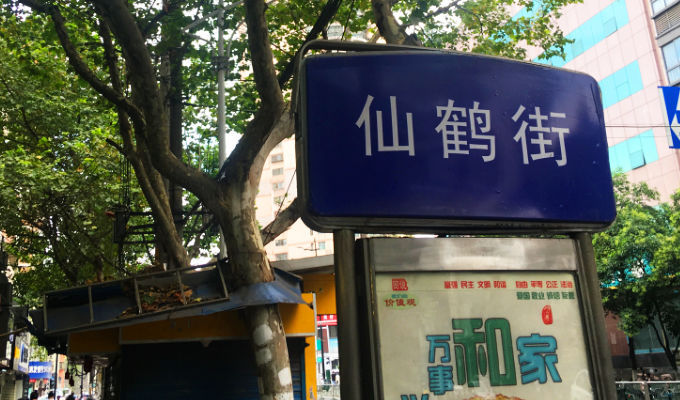Like most Chinese cities, the major streets of Nanjing are named after other cities in China. As per the debate over culture, identity and symbols in the “politics of place” branch of geography, so it be that Zhongshan Lu be the most important street in any Chinese city (Sun Yat-sen’s Simplified Chinese name is Sun Zhongshan) and that Shanghai Lu in Nanjing is a major thoroughfare but Yangzhou Lu is one stop short of a lane. Yet it is here, within the strokes of the Chinese characters providing these lesser known alleys with their monikers where much more insight into Nanjing’s past is to be found.
Yanliao Fang Workshop (颜料坊)
The silk industry in Nanjing was developed during the Ming and Qing Dynasties, and the scale of private enterprises engaged therein exceeded that of the government. It is said that silk washed by the waters of the Qinhuai River was the most suitable for weaving “black satin” and “azure satin”. The area around Zhonghua Men in Qinhuai District grew to be a concentration of silk industry since the Eastern Wu Dynasty, where silk workshops could be seen everywhere.
“Yanliao” means “pigment” and the enemy of pigment is moisture. Given that the last thing any self-respecting pigment maker would want is a flooded workshop releasing tides of coloured waters into the city, Yanliao Fang, that no longer exists, was located at Zhonghua Men since it is the highest point in this vicinity of Nanjing.
Rouge Lane (胭脂巷)
No longer a busy street, in ancient times, young girls from rich families used to go shopping in Rouge Lane for.… the best-quality rouge powder, together with other various other make-up and jewelry.
Sheepskin Lane (羊皮巷)
Nanjing has a lot of streets that are include the character, “羊” (sheep) and Sheepskin Lane was once the epicentre of sheepskin shops and lamb vendors. Nowadays, those vendors are long gone, having been replaced by a concentration of restaurants with more than 40 delicacies hidden in this alley.
Mingwa Lang (明瓦廊)
Mingwa Lang, dating back to the early Ming Dynasty, used to be one of the city’s main commercial roads, being a prosperous commercial block. Mingwa refers to the transparent tiles embedded in the windows or ceilings of houses. Made from the translucent shells of oysters or mussels, or even lamb horn, Mingwa Lang was the major marketplace for the colourful glass, also now an eatery street in Xinjiekou.
Gongjian Fang (弓箭坊)
Have a not-so-close look at the first character above, 弓. Wouldn’t happen to resemble a bow, would it? And so it came to be that the street Gongjian Fang was named on account of the prevalence of bow and arrow workshops in the vicinity. Their location is clearly recorded in the book “Note of Zhengde Jiangning County” from the Ming dynasty; “Arrow Workshop, east to the Iron Workshop, south of Yatou Lane, north of Huolou Lane. … Bow’s Workshop is to the west of Iron Workshop, north of Sanshan Street, south of Pigment Workshop”.
Crane Street (仙鹤街)
A piece of folklore goes thus; a poor and single mother lived alone in this area with her son, relying on weaving brocade to make a living, using materials donated from the owner of a nearby silk shop. Touched by their hard work and kindness, the seven fairies of the sky sent two beautiful cranes down to Earth to fly around their looms.
From then on, brocade materials magically appeared on the looms each day. The mother and son no longer needed to borrow materials from the owner, and life became better. Seeing that they produced better brocade, the enraged silk-shop owner forced the mother to tell the truth, whenupon the owner’s greed impelled him to rush into their house in a desperate hunt for the finished silk. Suddenly, a pair of beautiful cranes descended, severely pecking the head of the silk-shop owner and his housekeeper, in the process saving the lives of the mother and son. Ever since, people have called this Crane Street.
Golden Millet Nunnery (金粟庵)
It is well known today that “An” (庵) usually refers to a nunnery, but in ancient times it meant a thatched hut, that is, a so-called “nunnery with grass” (结草为庵). Since the Han Dynasty, a number of temples have been built in which Buddhist nuns can live and work, and therefore the word “An” has become synonymous with nunneries.









